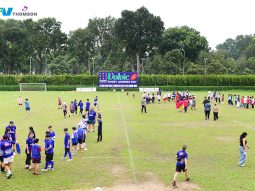On 18th May 2024, FV Hospital organised a medical symposium titled “Advanced Techniques for Interventional Cardiology” at the Phnom Penh Hotel in Phnom Penh, Cambodia. The symposium attracted numerous healthcare professionals from Vietnam and Cambodia who discussed the newest advancements in cardiovascular treatment.
There were 150 guests in this symposium, including cardiologists from major hospitals in Cambodia. Public hospitals represented included Calmette Hospital, Khmer Soviet Friendship Hospital, and Cambodia-China Friendship Preah Kossamak Hospital… Private hospitals included Central Hospital, Sunrise Hospital, Orienda International Hospital, SingMed Medical Centre, and Khema International Clinic.
In the afternoon of the symposium, FV Hospital also organised a session to provide knowledge on the diagnosis and treatments for common cardiovascular diseases with the audience.

As a Member of Thomson Medical Group, FV strengthens the connection to the medical community of other countries
The symposium began with an opening speech by Prof. Sok Chour, President of Cambodia Heart Association. According to Prof. Sok Chour, cardiovascular disease is one of the leading causes of death in the world. Due to the complex nature of this field, new and more effective treatment techniques are regularly discovered globally, in order to increase patients’ survival chances. At this cardiology symposium, Cambodian and Vietnamese doctors focused on discussing the newest advances in cardiovascular treatment that have been widely applied around the world. Prof. Sok Chour highly appreciated FV Hospital’s cooperation in connecting and disseminating medical knowledge with their Cambodian colleagues, that provides the cardiovascular community with practical medical knowledge.
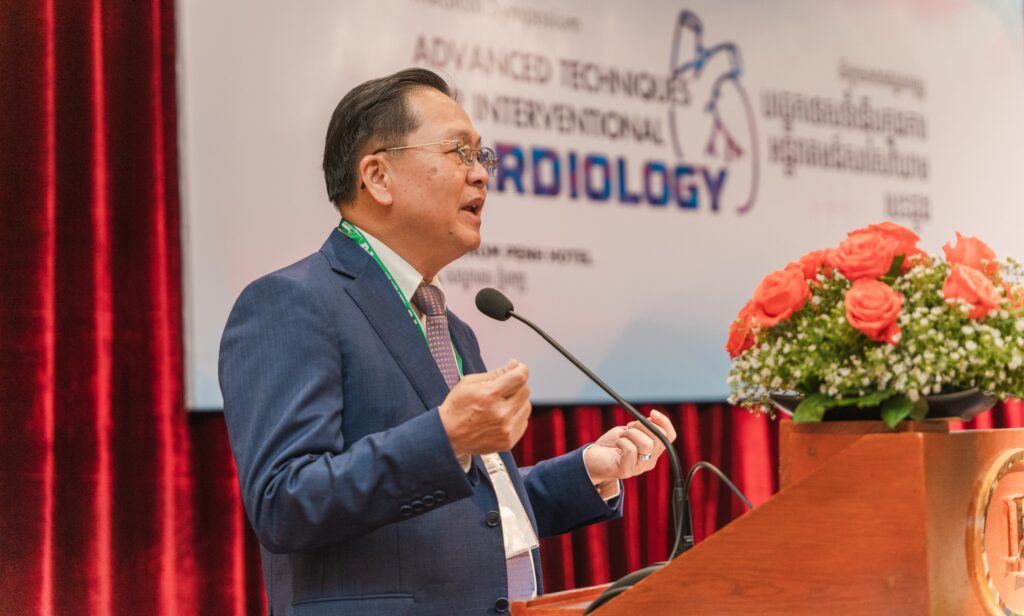
During the symposium, the audience gladly to noticed that FV Hospital had officially become a member of Thomson Medical Group – one of the leading healthcare groups in Southeast Asia.
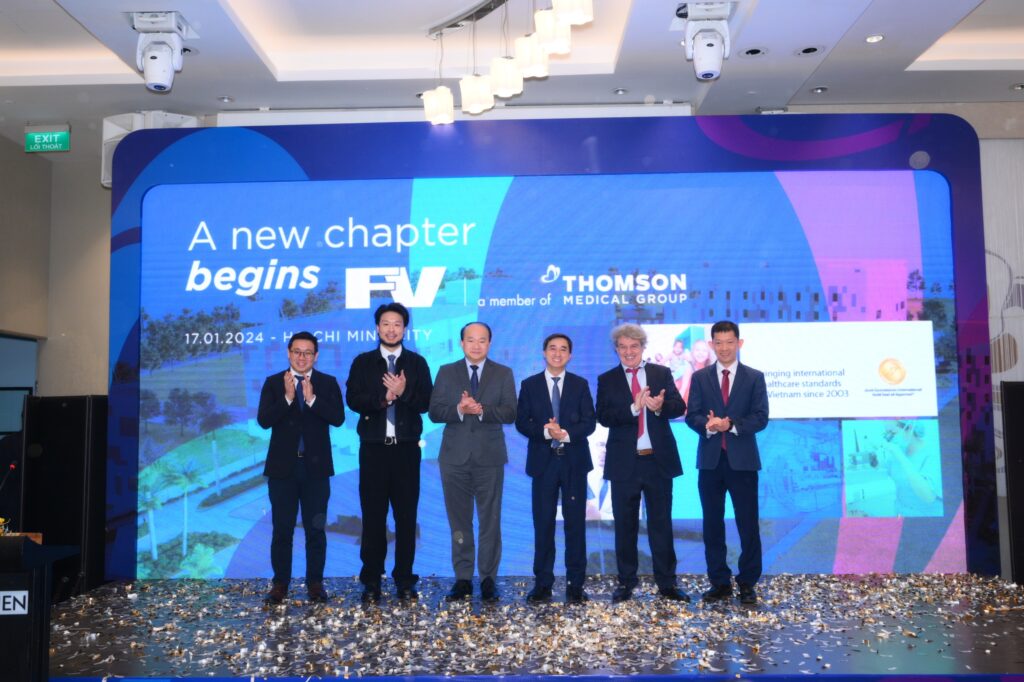
New advances elevate diagnosis and treatment of myocardial infarction
The cardiology symposium introduced many advanced cardiovascular treatment techniques from around the world that have been implemented in Vietnam and Cambodia. Ho Minh Tuan, MD, PhD, Head of Cardiology Department at FV Hospital, presented a topic that garnered much interest from cardiologists: “Advances in the treatment of ST Elevation Myocardial Infarction in FV Hospital.” This disease is caused by atherosclerotic plaque in the coronary arteries, leading to thrombus formation and artery blockage. This results in insufficient blood supply to the heart muscle. Without timely treatment, acute myocardial infarction can cause myocardial necrosis, heart failure, and even sudden death.
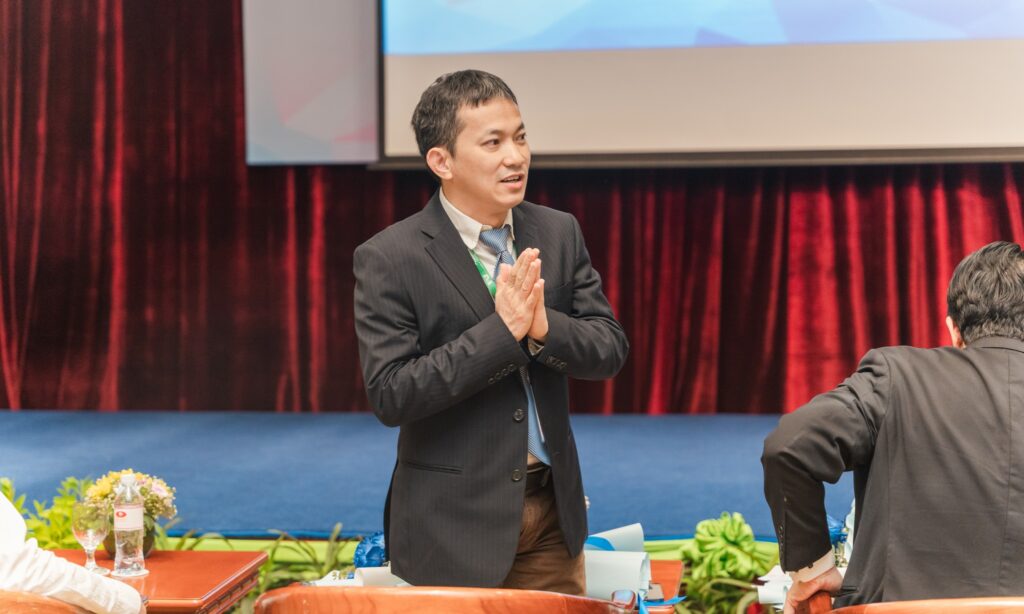
For years, FV Hospital has applied advanced stent placement techniques to promptly treat elevated risk of myocardial infarction. The stent is inserted from the radial artery to the heart, passing through the narrow area. The procedure takes 15 to 20 minutes, thereby saving critically ill patients in time.
According to international guidelines for emergency myocardial infarction, door-to-door balloon time should be under 90 minutes. However, FV Hospital sets a higher standard, aiming to reduce this process to less than 70 minutes, with many cases are completed in under 60 minutes. To achieve the shortest possible time, each team act like they are participating in a “Formula 1 race”, ensuring patients receive timely and continuous emergency treatment 24/7. According to data from the FV Cardiology Department, 99% of acute myocardial infarction cases were treated with intervention at FV within the prescribed time, achieving a survival rate of over 95%.
To achieve these high outcomes is only thanks to FV investing a Cathlab full of modern equipment to support performing procedures; especially accurate diagnostic technologies for intravascular images such as Optical Coherence Tomography (OCT), Intravascular Ultrasonography (IVUS), Rotablator™ Rotational Atherectomy System (Rotablator).
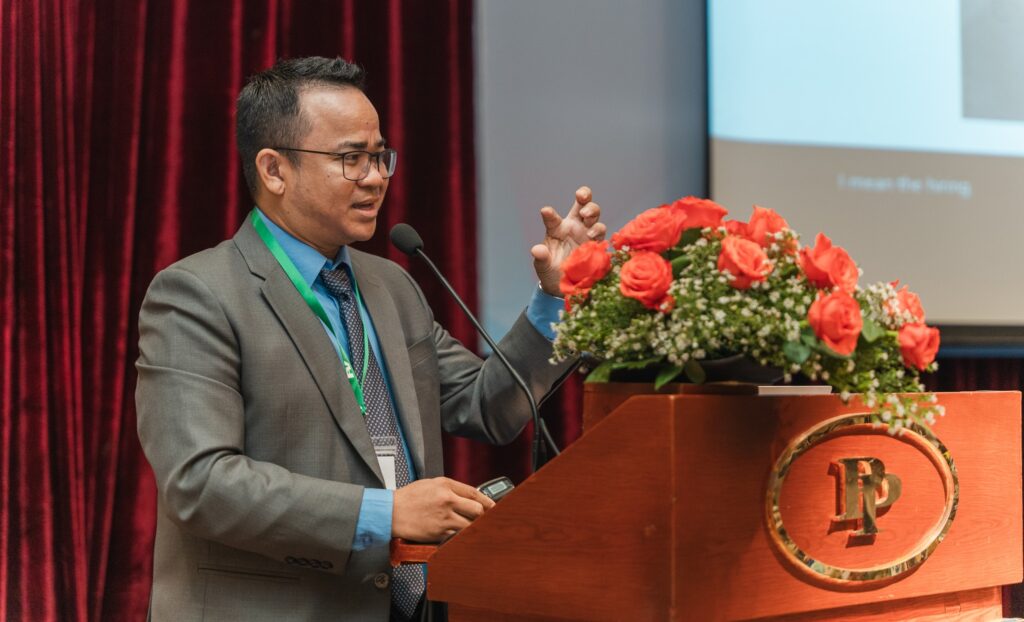
In regard to the diagnosis of intravascular diseases, Dr Nhem Sophearath, Interventional Cardiologist, Calmette Hospital, delivered a report of “The role of intravascular ultrasound (IVUS) in percutaneous coronary intervention (PCI)”.
Intravascular ultrasound (IVUS) is a technique that utilises a very small 60 MHz ultrasound probe, which is inserted into coronary arteries and through the injured site to produce HD-quality images so that doctors can assess the condition of the vascular system. This is a new yet safe method with a high rate of precision that can be performed repeatedly in assessing coronary artery structure and associated pathologies, as well as changes in the vascular system, pre- and post-intervention. For chronic obstructive pulmonary disease, doctors can use IVUS to find the correct vein and increase the possibility of successful treatment.
According to Dr Nhem Sophearath, the application of IVUS has many benefits such as: optimising the results of angioplasty, facilitating a more accurate assessment of lesions, and reducing thrombotic complications of the stent; this helps physicians to identify the appropriate treatments for patients, helps to reduce the rate of recurrence and reduces mortality from coronary artery disease.
The Leadless pacemaker implantation: a new advancement in arrhythmia treatment
Dr Hoang Quang Minh, Cardiology Department at FV Hospital presented on the topic “Abnormal Conditions post STEMI – The Leadless pacemaker implantation” that attracted significant attention from the experts in the audiance.
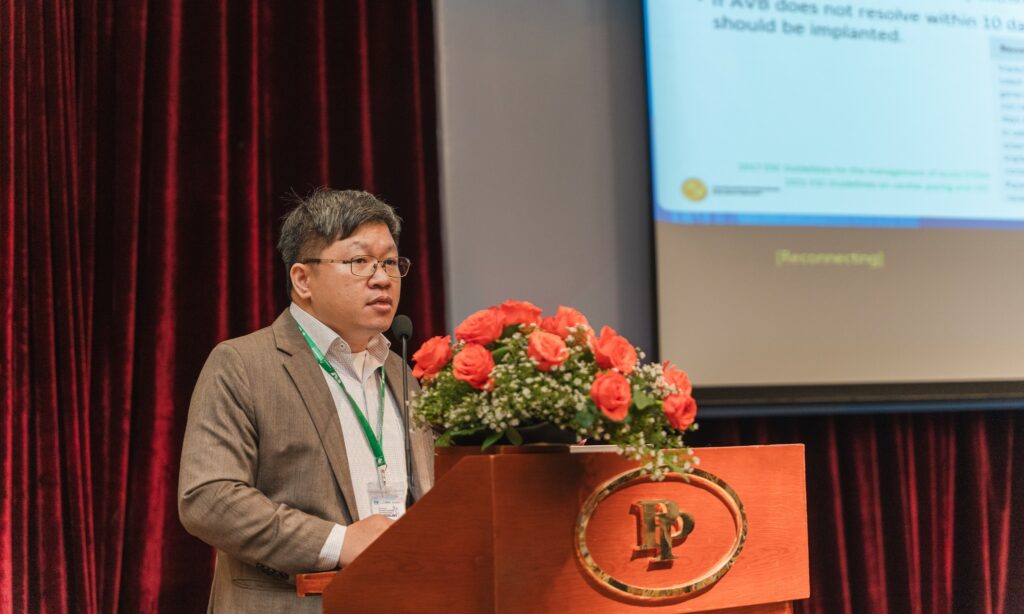
For a long time, patients with arrhythmia were prescribed wired pacemakers through veins. While these devices help stabilise heart rhythm, they have some drawbacks, such as infection risk, and itching at the insertion site. Wired pacemakers cannot be used for subclavian artery occlusion, or for patients with severe renal failure who require dialysis.
The wireless pacemaker device was introduced in 2016 to help solve the limitations of the previous wired pacemaker, such as high risk of pocket infection and itchy insertion site that elderly or confused patients may scratch uncontrollably, risking skin abrasions and potentially causing the device to protrude and cause infection. This device is one-tenth the size of a wired pacemaker and is implanted directly into the patient’s heart chamber without any wires. The pacemaker implanted into patient’s heart chamber via a catheter from the femoral vein. The surgery lasts 30 minutes, with minimal anaesthesia. This technique was recently implemented at FV Hospital, offers many advantages in arrhythmia treatment for patients.
Treatment aortic valve stenosis by using TAVI technique, without open-heart surgery
Aortic valve stenosis is a common cardiac condition, affecting approximately 2-5% of people aged 65 and older and 30% of individuals over 75. This condition presents many treatment challenges, especially in elderly patients with comorbidities. At the conference, Dr Ho Minh Tuan presented a report titled “The Changing Landscape of Aortic-Valve Stenosis Management by TAVR.”
Aortic valve stenosis is a condition where the heart valve cannot fully open, obstructing the flow of blood from the heart to the body. Patients with aortic valve stenosis face a 40% risk of mortality within a year if they do not undergo intervention to replace the malfunctioning valve. The standard treatment method for aortic valve stenosis was open-heart surgery; this is where the patient’s chest is opened, the heart stopped, and then surgeons replaced the natural aortic valve with an artificial valve. However, this method had several limitations as it involves lengthy surgery, a high risk of complications, a long recovery period, and was not suitable for elderly patients or those with underlying health issues such as diabetes, coronary artery disease, kidney failure, or lung disease.
Recently, the transcatheter aortic valve implantation (TAVI) with which there is no need for open heart surgery has been widely introduced in many countries around the world and at some major cardiovascular centres in Vietnam, including FV. With TAVI, the Doctor inserts a new valve into the patient’s heart through an artery in the leg to replace the damaged aortic valve.
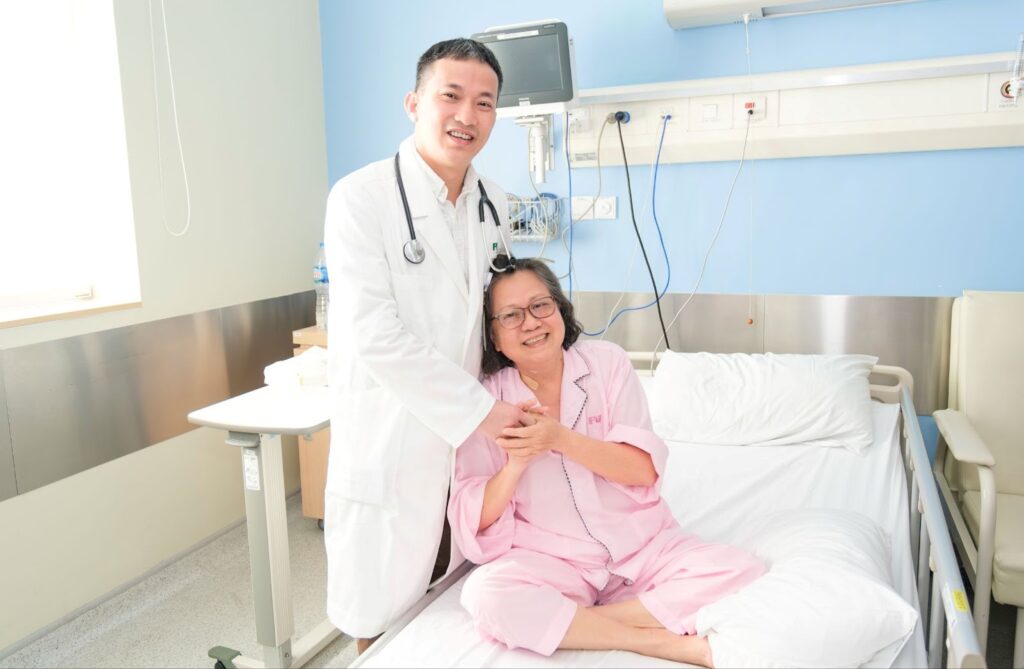
Transcatheter Aortic Valve Implantation (TAVI) has emerged as a medical breakthrough, providing a lifeline for aortic valve stenosis patients. This method offers numerous advantages: it can be performed on elderly patients with comorbidities, with a faster recovery time, and avoids risks associated with complications like infections, bleeding, or heart failure. Dr Ho Minh Tuan considers that TAVI will continue to be a valuable tool for specialists in cardiovascular intervention.
Medical symposium “Advanced techniques for interventional cardiology” was highly appreciated by the participating doctors for its practical applicability. It was an opportunity for many cardiovascular centres to consider implementing these new techniques, improving treatment effectiveness.
These doctors also highly valued FV’s efforts in regularly organising exchanges with Cambodian doctors that shares new achievements in treating complex diseases. This knowledge is invaluable for doctors directly treating patients in Cambodian hospitals.
The event FV becoming a member of Thomson Medical Group has been hailed by both local and international media as the largest Healthcare M&A in Vietnam’s history with 381.4 million USD, and notably the largest purchase in Southeast Asia’s healthcare sector since 2020.
| Contact FV Representative Office in Cambodia: (+855) 23 211 777 FV Hotline in Ho Chi Minh City: (028) 54 11 33 33 Website: https://www.fvhospital.com |

 Vi
Vi 
